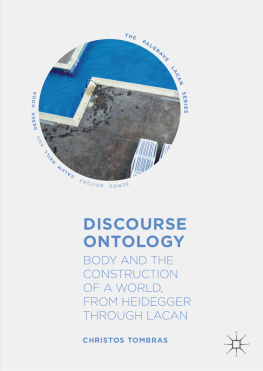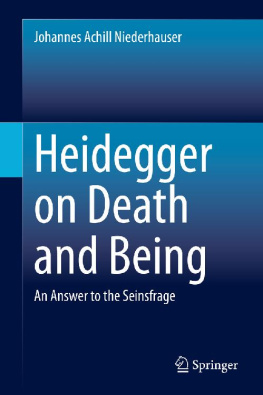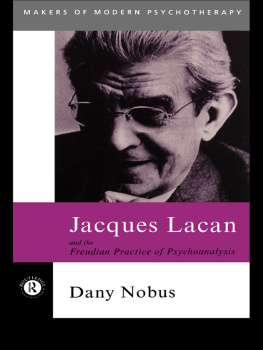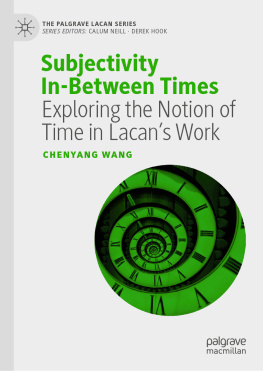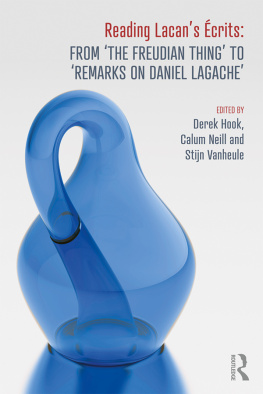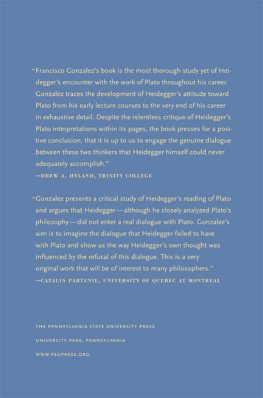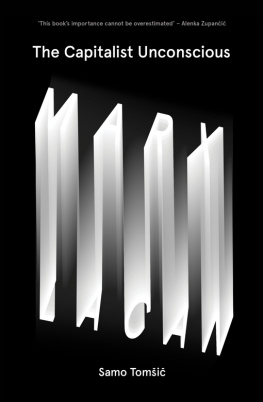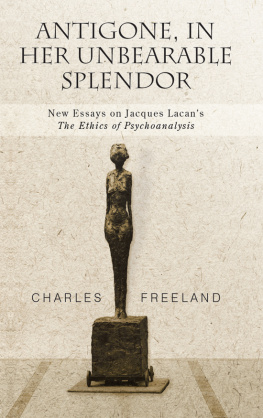Contents
Landmarks
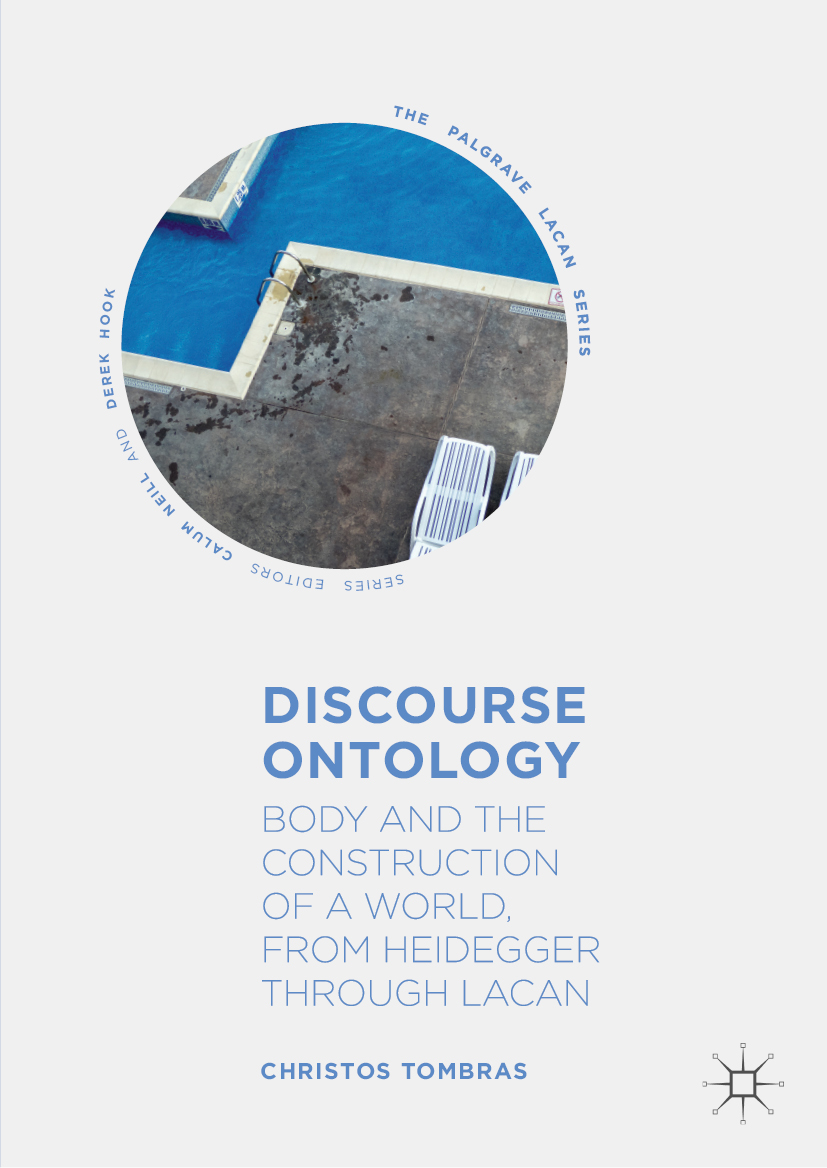
The Palgrave Lacan Series
Series Editors
Calum Neill
Edinburgh Napier University, Scotland, UK
Derek Hook
Duquesne University, Pittsburgh, USA
Jacques Lacan is one of the most important and influential thinkers of the 20th century. The reach of this influence continues to grow as we settle into the 21st century, the resonance of Lacans thought arguably only beginning now to be properly felt, both in terms of its application to clinical matters and in its application to a range of human activities and interests. The Palgrave Lacan Series is a book series for the best new writing in the Lacanian field, giving voice to the leading writers of a new generation of Lacanian thought. The series will comprise original monographs and thematic, multi-authored collections. The books in the series will explore aspects of Lacans theory from new perspectives and with original insights. There will be books focused on particular areas of or issues in clinical work. There will be books focused on applying Lacanian theory to areas and issues beyond the clinic, to matters of society, politics, the arts and culture. Each book, whatever its particular concern, will work to expand our understanding of Lacans theory and its value in the 21st century.
More information about this series at http://www.palgrave.com/gp/series/15116
Christos Tombras
Discourse Ontology Body and the Construction of a World, from Heidegger through Lacan
Christos Tombras
London, UK
The Palgrave Lacan Series
ISBN 978-3-030-13661-1 e-ISBN 978-3-030-13662-8
https://doi.org/10.1007/978-3-030-13662-8
Library of Congress Control Number: 2019932950
The Editor(s) (if applicable) and The Author(s), under exclusive license to Springer Nature Switzerland AG 2019
This work is subject to copyright. All rights are solely and exclusively licensed by the Publisher, whether the whole or part of the material is concerned, specifically the rights of translation, reprinting, reuse of illustrations, recitation, broadcasting, reproduction on microfilms or in any other physical way, and transmission or information storage and retrieval, electronic adaptation, computer software, or by similar or dissimilar methodology now known or hereafter developed.
The use of general descriptive names, registered names, trademarks, service marks, etc. in this publication does not imply, even in the absence of a specific statement, that such names are exempt from the relevant protective laws and regulations and therefore free for general use.
The publisher, the authors and the editors are safe to assume that the advice and information in this book are believed to be true and accurate at the date of publication. Neither the publisher nor the authors or the editors give a warranty, express or implied, with respect to the material contained herein or for any errors or omissions that may have been made. The publisher remains neutral with regard to jurisdictional claims in published maps and institutional affiliations.
Cover illustration: Christos Tombras
This Palgrave Macmillan imprint is published by the registered company Springer Nature Switzerland AG
The registered company address is: Gewerbestrasse 11, 6330 Cham, Switzerland
Contents
List of Figures
Fig. 5.1 Formulas of sexuation
Fig. 5.2 Borromean knot or link and trefoil knot
The Author(s) 2019
Christos Tombras Discourse Ontology The Palgrave Lacan Series https://doi.org/10.1007/978-3-030-13662-8_1
1. Introduction
This is a book discussing the philosophical foundations of psychoanalysis, in an attempt to bring together and reconcile, if possible, Heideggers criticisms with Lacans post-Freudian metapsychology. This is a task that I assigned to myself, being a practising psychoanalyst who cannot afford to ignore Heideggers questioning regarding the fundamentals of psychoanalytic theory.
Allow me to start, however, by bringing in a small personal memory. In my family home, we had a big radio, our main means of entertainment in those pre-Internet days. Radio was like magic to me as a small child. This was an old valve radio, and looking through the ventilation grilles, I was especially fascinated by the gently illuminating components inside. It looked like a strange stage. The valves, with their filaments emanating warm yellow light and the cathodes, grids and other wirings, looked like miniature music standseach with its own stool and small reading light, or so I thought. When music played, I was convinced that if I observed carefully enough, I would be able to discern the musicians in the half-light. I really believed that. Practical questionsfor example, how was it possible for the musicians to squeeze in there, how did they become so small, where would they go after the music was over and the likewere of no concern to me. They were not relevant to the issue. The issue was that musicians were there, and my challenge was to squint hard enough to see them.
Later I found out that my disregard of these practical aspects of the phenomenon, perhaps nave to my adult eyes, was not too dissimilar to the reasoning of medieval philosophers when they discussed questions pertaining to the nature of angels. They wondered, for example: Is it possible for several angels to be in the same place? How many angels can coexist at any given point in spacesay the head of a pin? What is the nature of an angels bodily existence? The philosophers answers were not at all self-evident, and today appear a bit absurd. You read Thomas Aquinas , for example, who discussed this and other issues in his Summa Theologica. In principle, he said, it is permissible to have more than one angel in the same place, since they dont have a material body and restrictions of impenetrability do not apply.
Surprisingly by todays standards, Aquinas approached the problem in terms of causality. His understanding of the world was Aristotelian. He took causality to be fundamentally dependent on locality. For Aquinas, as for Aristotle, space cannot be empty, and action from a distance is not permissible (nor conceivable). This simply means that action at any given point in space can be a cause of a change at an adjacenti.e. not distantpoint. Granted, angels are immaterial, and this means that more than one can in principle be in the same place; but they also are causes of something. As such, Aquinas reasoned, they cannot be in the same place, because if they could, this would mean that you can have two or more causes for one effectsomething which is conceptually impermissible. His conclusion: no more than one angel can be in the exact same place at a given time.
Aquinas reasoning does not make much sense today because we have different conceptual starting points. Our understanding of space is different, and our thinking of causality, even though still dependent on locality, is more abstractand, admittedly, more flexible than Aristotles.
Changing Causes
Interestingly, Aristotle s theory of causality was at the heart of other questions that have puzzled ancient thinkers for centuries. The study of movement, for example, seemed to present equally perplexing problems. For Aristotle, movement is a change, and change occurs only where there is something causing it. A stone rolls because it is kicked. Water flows downwards, under the incessant influence of gravity, striving to reach its natural place. An apple falls for similar reasons. A person moves because they want to reach a destination. There is

